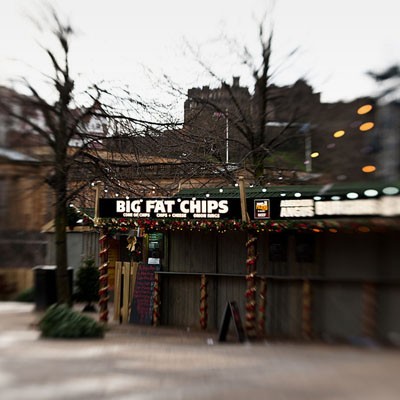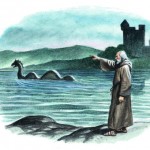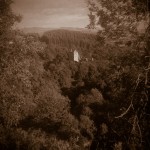A casualised economy, sold-off sports fields and an over- reliance on cars has produced an obesity epidemic. Chris Harvie on how we might shed some lard
Support independent, non-corporate media.
Donate here!

The late Alan Whicker once ventured into the Ozarks and talked to mountainy men. They were all for fat. ‘Them hippies settled in these parts, lived off lentils.They didn’t put on fat, so they froze. You need fat under the skin, like we had.’ Tennessee folk were often of Scots descent, so this may have had something archaic attached to it.
As a journalist in the 1950s Neal Ascherson found a similar line coming from Germans who had survived Stunde Null in 1945: ‘Here’s my wife,’ said one, admiringly, ‘Isn’t she fat!’
Some years ago archaeologists dug the Swabian Venus out of a cave in the Alb above Tuebingen: 30,000 years: all bosom and bum, cleft with an emphatic vagina. So the fat wife may have been something racy of the soil, and not just a reaction to the privations of 1945. Burns in his bawdy poems insisted that ‘a good mowe’ was the people’s birthright, and this does something to explain (if not excuse that ‘all lads together’ feeling) of much of The Merry Muses.
In fact from the realist pictures of the time – David Wilkie, Alexander Geddes and so on, folk seem to have been slender. Wilkie (then only 18) has a truly massive laird sizing him up in ‘The Chalmers-Bethune family’ (1804). He may have been exceptional in his realism though – as if weighted by its syllable-sequence – did the very ponderousness of ‘Han-o-ver-i-an’ tip the scales away from scrawny Sawney?
II
Body-Mass Index means what it says, and in Brian Cox’s fine forensic TV series ‘Sweet Temptation’ this balance is still there. Our man has been around, and knows where the hits come from: historically interwoven with ‘Scotland’s progress’: sugar and usqueba/aquavit to hep us up, tobacco and opium to calm us down. In 1950s Presbyterian Motherwell ‘Ye’ll come and take pot luck!’ meant an invitation to sweet tea and round after round of scones, butter, jam, clootie dumplings on birthdays, and enough home-made cakes to stock a Cranston café. Washed down for the bairns with Barr’s drinks – not Irn-bru but delicious lemonade percussive in its fizziness. Barrs made their dough from providing a beer substitute that didn’t have high-paid ‘puddlers’ falling into lakes of molten iron.
Looking at photos of political groups and family from the 1930s to the 1960s folk are still, despite the carbohydrate impact, quite small. Granny Harvie (Aunt Teenie to everyone else and looking the part) was until her last few years (she died at 90) always on her feet in Union Street: cooking, gardening, shopping – the Dalzell Co-op Store built by her brother-in-law, where she’d worked as a milliner, was two hundred yards off, the kirk a quarter-mile away. Being on her feet most of the day, she burned it all off. Her husband, in fourteen years of retirement, was more sedentary, gardened on good days, smoked. He died of a coronary at seventy-seven.
Aunt Jessie’s car didn’t turn up until they moved from Crossfield, purchased for demolition in 1961, to the Loaning, a bungalow with a big garden and garage. The car was still a minority acquisition: only one in ten Scots households had one in 1970.
III
Today the major circuit is car-borne: the car being a once-for-all choice, and in Scotland shelter as much as transit. It caters for the weekly supermarket shop and the work journey (or several part-time jobs, several journeys, to different places), suspending work for the chatter of local radio or Smooth Classics at Six. Filling up the car and getting its ailments seen to, buying the carry-out meal, complete the day.
Ageing and marital instability being what they are, this fractures at its margin to the condition of older Scots towns, which at first glance look much like they always did, with strings of twinkly shop-fronts along the bus-routes. But most o f the little shops have mutated into ‘wee businesses’ notably hairdressing or flowers or pet stuff, off-licences, fast food, betting shops, money-shops of various kinds, charities, pawnshops, mobile phones, criminal solicitors offices, MSPs and councillors surgeries, and …
… new developments in done-up town centres: ‘Fest Places’. Highland dress shops and hirers, boutiques, gift shops for the marriages, seemingly reviving along with stag-and-hen dos, that we now go in for. Along with public sector chic – coffee shop franchises, church kitchens, chain charities, hospital or disabled centres. Into both lifestyles food and mobility intrude and mould, but chances of exercise diminish, along with an anticipated rhythm of life and considered attitude to what we eat. In an increasingly casualised economy, food – Brian Cox’s ‘milk chocolate hit’ in spades – lubricates.
The butter and milk of Motherwell ‘pot luck’ have formally taken leave, only to come back: commercial, unsupervised – and unburned-off. As distinctiveness fades from the urban landscape, it imprints itself on distended skin, in the cinemascope and technicolour of tattoo.
III
How did we get here, pursuing the United States in the world obesity league? Think of the late Christopher Hitchens – gags, fags and booze –and then of that altogether weightier contrarian G K Chesterton, and his dictum: ‘inside every thin man there’s a fat man trying to get out.’ Apply this to Scottish contemporary history. In the absence of the map that a discernable economic structure gives, how did we reach the exotic, unsatisfying fields we are browsing in?
Not a monocausal explanation, but consider. In the late 1980s there was a long teachers’ strike, settled on terms which led a weakening profession to drop most of its out-of-hours work. So kids did less sport and teachers less running about after them. Result: less exercise all round, and paradoxically an exam- rather than child-centred education. Declining use of sports fields led to them being sold off for housing, just as the discounted sale of council houses yielded enough cash to buy cars.
In 1979-87 Thatcher’s infantile monetarism plus the oil price slump had triggered a second wave of deindustrialisation, with Ravenscraig finally closing in 1992: comfort eating and motoring around absorbed the fallow hours. The fat man got out, and has been on the loose since. ‘Erst das Fressen, dann die Moral!’ ran Bert Brecht’s slogan: ‘First eat, then think.‘ But in a society whose productive, manufacturing economy was structurally shattered? – or quite literally offshored – how do we get back to where we once were?
Or did consumption flow into the vacuum? On a tide of new verbiage? On the Holyrood Economy Committee, 2007-11, the theme of ‘superfast broadband’ was seldom absent. It was taken as axiomatic that industry wouldn’t expand without it. But was this really the case? Or did saturation media coverage – Bruce Willis and bigger bangs whenever you wanted them, Grand Theft Auto IV – provide a sensory parallel to ‘all you can eat for £6.99?’
IV
Coatbridge is said to be Scotland’s fat city. I recently found myself outside its Sunnyside Station waiting for motorist friends to extricate themselves from the spaghetti-junction between there and Glasgow. Cars were zip-zapping in all directions, though very co-operatively: scarcely a passenger onto or off the ‘Blue Trains’ (there for over half-a-century) wasn’t carefully set down, waited for, or picked up. Only a handful made their way to the interesting town centre on foot. (Coatbridge is handsomely-served by its Wikipedia entry; Motherwell’s is useless).
I remembered a poignant, rather ominous TV documentary on the place from twenty years back: about the body-building culture that had grown up in the deserted steel-industry workshops. Musclemen flexed under empty gantries. Later years have seen this become a chemical ‘way out’, through addiction to testosterone-enhancing drugs: maybe a third of the West’s needlemen. But think: rather more than ironically, the curriculum of this laboratory/school for ‘entertainment security executives’ catered for the same hormones that produced in 2008 the catastrophic hits of ‘extreme finance’ on RBS, HBOS.
IV
Scotland’s manufacturing is down to 10% of GDP. Compare this with the 30% plus of Baden-Wuerttemberg (Daimler, Bosch, Voith, etc.) and recovery scarcely looks possible, let alone independence. Yet here and in the history is the central geotechnic argument for viability.
Scotland can cater for the combination of oil and gas, enhanced by carbon-capture, on- and offshore wind, current and tidal generation, along with the growing importance of counter-inundation. The last is a new player and lastingly important. By 2050 over half the world’s people will live on flood-plains or on littorals under fifty miles from the sea. A hurricane- and tsunami-threatened urban world, ill-designed and riskily-sited – look at New York in the aftermath of Storm Sandy, and be afraid – will desperately need a complex work-site amid appropriately nasty weather with centres of research and construction to hand, and a mobile workforce that knows the life.
Given the foregoing, are we reverting to the Picts, Picti, ‘Painted Folk’? And maybe this mobile tribalism is no bad idea: a thought from Abu Dhabi and the voices wafting up from the Hilton swimming pool, the men off the rigs, in the one bar in town. Do the grounds for hope lie, as ever, in history, and the philosophy o f Marx? As in ‘At the Circus’: take it away, Groucho!
Oh Lydia, oh Lydia, say, have you met Lydia?
Lydia The Tattooed Lady.
She has eyes that folks adore so,
and a torso even more so.
Lydia, oh Lydia, that encyclo-pidia.
Oh Lydia The Queen of Tattoo.
On her back is The Battle of Waterloo.
Beside it, The Wreck of the Hesperus too.
And proudly above waves the red, white, and blue.
You can learn a lot from Lydia!
When her robe is unfurled she will show you the world,
if you step up and tell her where.
For a dime you can see Kankakee or Paree,
or Washington crossing The Delaware.
Lydia, oh Lydia, that encyclo-pidia.
Oh Lydia The Champ of them all.
She once swept an Admiral clear off his feet.
The ships on her hips made his heart skip a beat.
And now the old boy’s in command of the fleet,
for he went and married Lydia!
You can learn a lot from Scotland, if you’re not fussy about how…
See also:
bellacaledonia.org.uk









